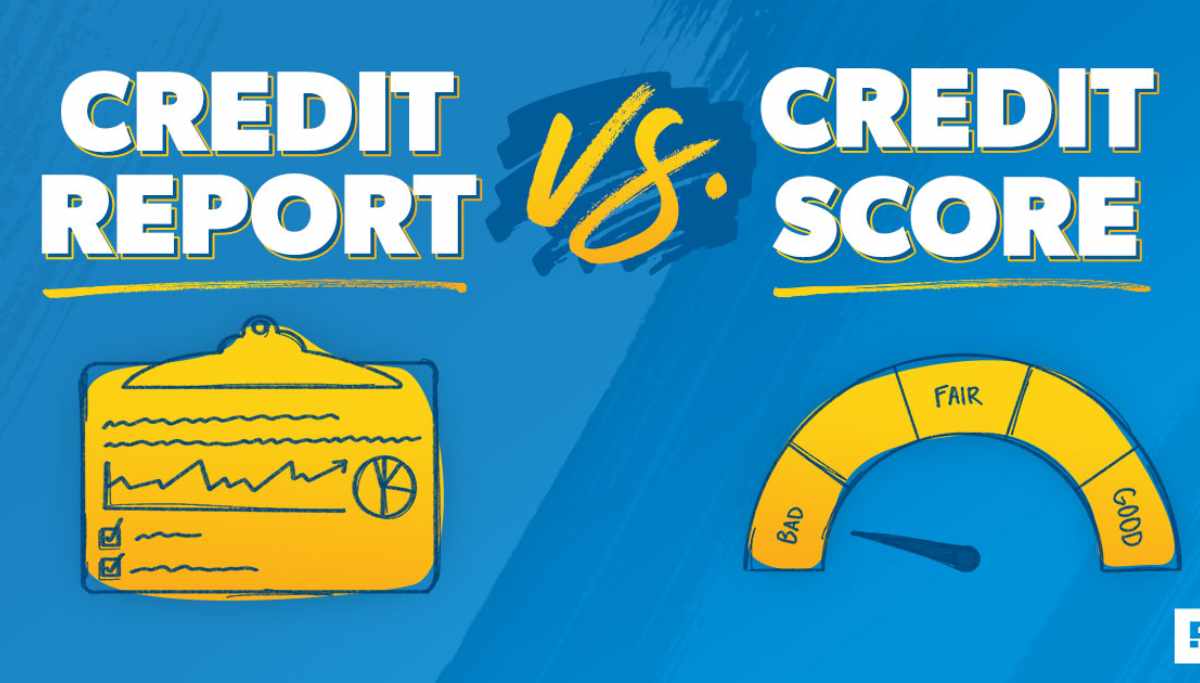

Finance
How To Make A Fintech App
Published: October 29, 2023
Learn how to create a powerful finance app with our step-by-step guide. Boost your fintech business with innovative features and provide seamless financial solutions.
(Many of the links in this article redirect to a specific reviewed product. Your purchase of these products through affiliate links helps to generate commission for LiveWell, at no extra cost. Learn more)
Table of Contents
Introduction
Welcome to the world of fintech, where finance and technology merge to revolutionize the way we manage our money. Fintech, short for financial technology, is reshaping the financial industry by offering innovative digital solutions to make financial services more accessible and efficient. One of the key aspects of fintech is the development of fintech apps that provide users with convenient access to a range of financial services on their smartphones and tablets.
Fintech apps have gained significant popularity in recent years, as they enable users to perform various financial transactions, such as making payments, transferring funds, budgeting, investing, and much more, right at their fingertips. These apps offer a seamless and user-friendly experience, making it easier for individuals and businesses to manage their finances on the go.
In this article, we will explore the process of creating a fintech app from scratch, covering various aspects such as understanding the features, conducting research and planning, designing the user interface, developing the backend, integrating financial APIs, implementing security measures, testing, launching, and marketing the app.
Building a successful fintech app requires careful planning, expert knowledge, and seamless execution. By following the steps and insights provided in this article, you will have a solid foundation for creating your own fintech app that stands out in the competitive market.
Understanding Fintech Apps
Before we delve into the details of creating a fintech app, it is important to have a clear understanding of what these apps are and why they have become so popular.
Fintech apps are mobile applications that utilize technology to offer a wide range of financial services to users. These services can include money management, investment tracking, budgeting tools, payment processing, lending platforms, and much more. The goal of a fintech app is to simplify and streamline financial tasks, making them more accessible, convenient, and efficient for users.
One of the main reasons why fintech apps have gained immense popularity is their ability to provide financial services to a broader audience. Traditional banking systems often have strict requirements and limitations that can exclude certain individuals or businesses from accessing financial services. Fintech apps, on the other hand, are designed to be inclusive and user-friendly, catering to a wide range of users regardless of their location or income level.
Moreover, fintech apps offer enhanced convenience and flexibility. Users can access their financial information and perform transactions anytime, anywhere, as long as they have a smartphone or tablet and an internet connection. This level of accessibility empowers users to stay on top of their finances, track their spending, make informed investment decisions, and effectively manage their money.
Another advantage of fintech apps is their ability to leverage data and analytics to provide personalized recommendations and tailored financial advice. By analyzing user data, fintech apps can offer insights and recommendations based on users’ spending habits, income, and financial goals. This personalized approach helps users make better financial decisions and achieve their long-term financial objectives.
Fintech apps also foster financial literacy and education. Many of these apps offer educational resources, such as articles, videos, and tutorials, to help users improve their financial knowledge and make informed decisions. By promoting financial literacy, fintech apps empower users to take control of their finances and build a solid foundation for their financial future.
Overall, fintech apps are transforming the way we interact with money and financial services. They provide a convenient and inclusive platform for users to manage their finances, access a range of financial products and services, and gain a deeper understanding of their financial health. In the next sections, we will explore the key features of a fintech app and the steps involved in creating and launching one.
Key Features of a Fintech App
When developing a fintech app, it is crucial to understand the key features that make these apps stand out and deliver a superior user experience. Here are some of the essential features to consider:
- User Authentication: A secure and user-friendly authentication process is crucial in a fintech app. Users should be able to access their accounts through various authentication methods, such as biometric (fingerprint, facial recognition) or two-factor authentication, to ensure the security of their sensitive financial information.
- Account Aggregation: To provide users with a comprehensive view of their finances, a fintech app should support account aggregation. This feature allows users to link and view multiple accounts, including bank accounts, credit cards, investment portfolios, and more, in one centralized dashboard.
- Transaction Tracking: Fintech apps should enable users to track their transactions in real-time. This includes presenting clear and detailed transaction histories, categorizing expenses, and providing insightful visualizations to help users understand their spending patterns.
- Payment Integration: Seamless integration with payment gateways and digital wallets is essential in a fintech app. Users should be able to make payments, transfer funds, and initiate transactions directly from the app, enhancing their convenience and reducing the need for switching between multiple platforms.
- Budgeting Tools: A robust budgeting feature is highly beneficial to help users track their expenses, set financial goals, and manage their money effectively. This can include features such as expense categorization, budget allocation, spending alerts, and personalized budgeting recommendations.
- Investment Management: For users interested in investment, a fintech app can provide features for tracking and managing investment portfolios. This can include real-time market data, portfolio performance analysis, investment recommendations, and the ability to buy or sell securities through integrated brokerage services.
- Loan and Credit Services: Some fintech apps offer loans and credit services, enabling users to apply for loans, check credit scores, and manage repayments directly from the app. Integrating credit scoring systems and loan application processes can provide a seamless experience for users seeking financial assistance.
- Financial Education: In addition to the core features, many fintech apps strive to educate and empower users by providing financial articles, blogs, tips, and educational resources. This helps users improve their financial literacy and make informed decisions.
While the specific features may vary depending on the nature of the fintech app, these key elements contribute to a comprehensive and user-friendly experience. By incorporating these features, you can create a fintech app that not only meets user expectations but also exceeds them, giving your app a competitive edge in the market.
Research and Planning
Before diving into the development process, conducting thorough research and planning is crucial for the success of your fintech app. Here are some key steps to follow:
1. Identify Your Target Audience: Define the target audience for your fintech app. Are you targeting individual consumers, small businesses, or specific industries? Understanding your target audience will help you tailor your app’s features and user experience to their needs and preferences.
2. Market Analysis: Conduct a comprehensive market analysis to identify existing competitors, their strengths, weaknesses, and market trends. This will help you identify gaps in the market and find opportunities to differentiate your app.
3. Define Your Unique Selling Proposition (USP): Determine what sets your app apart from competitors. What unique features or capabilities does your app offer? Defining a clear USP will help you attract and retain users.
4. Create an App Development Roadmap: Break down the development process into manageable tasks and create a roadmap or timeline. This will help you track progress, set deadlines, and allocate resources effectively.
5. Choose the Right Technology Stack: Select the appropriate technology stack for your app, considering factors like scalability, security, and user experience. Evaluate various technologies and frameworks to ensure they align with your app’s requirements.
6. Regulatory Compliance: Ensure your fintech app complies with relevant financial regulations and security standards. Research and understand the legal and regulatory requirements that apply to your app, such as data protection and privacy regulations.
7. Design User Flow and Wireframes: Create a user flow diagram and wireframes to visualize how users will navigate through your app. This will help you identify potential pain points and make improvements in the user experience.
8. Create a Minimum Viable Product (MVP): Consider developing an MVP to test your app’s core functionalities with a select group of users. This allows you to gather valuable feedback and make necessary iterations before investing in full-scale development.
9. Estimate Costs and Resources: Assess your budget and resource requirements for developing and launching the app. Consider factors such as development, design, marketing, and ongoing maintenance costs.
10. Formulate a Marketing Strategy: Determine how you will market and promote your fintech app. Identify key channels, such as social media, content marketing, and partnerships, to reach your target audience effectively.
By thoroughly researching and planning your fintech app, you lay a solid foundation for its development and success. This phase is crucial for understanding your market, defining your app’s unique value proposition, and creating a roadmap to guide your development team. Investing time and effort in this stage will greatly increase your chances of creating a successful and impactful fintech app.
Designing the User Interface
The user interface (UI) is a critical component of a fintech app as it directly impacts the user experience and the app’s overall success. Here are some key considerations when designing the user interface:
1. Keep it Simple and Intuitive: Aim for a clean and minimalist design that is easy to navigate and understand. Avoid cluttered screens and complex layouts that can confuse users. Use intuitive icons and labels to guide users through the app’s features and functionality.
2. Consistency and Branding: Maintain consistency in color schemes, typography, and visual elements throughout the app. This helps build brand recognition and familiarity, creating a cohesive and memorable user experience.
3. Responsive Design: Ensure your fintech app is designed to be responsive, adapting to different screen sizes and orientations. This ensures a seamless and consistent experience across various devices, including smartphones and tablets.
4. Seamless Onboarding: Provide a smooth onboarding process to help users understand the app’s features and benefits. Incorporate user-friendly tutorials, tooltips, or welcome screens to guide new users through the app’s functionality and encourage engagement.
5. Clear Information Hierarchy: Organize information in a logical and hierarchical manner to make it easy for users to find what they need. Use headings, subheadings, and visual cues to highlight important information and guide users through the app’s flow.
6. Visual Appeal: Pay attention to the visual elements of your app, such as color palettes, fonts, and graphics, to create an aesthetically pleasing and visually engaging experience. Use subtle animations and transitions to enhance the user experience without overwhelming the user.
7. Accessibility: Design your app with accessibility in mind, ensuring it is usable by a wide range of users, including those with disabilities. Incorporate features such as text-to-speech, adjustable font sizes, and high contrast options to make your app accessible to all users.
8. User Feedback and Error Handling: Incorporate clear and helpful feedback messages when users perform actions or encounter errors. Design error handling mechanisms that guide users on how to rectify mistakes and recover from errors seamlessly.
9. Usability Testing: Conduct usability testing to gather user feedback and identify areas for improvement. Observing how real users interact with your app can provide valuable insights into its usability and help you refine the user interface.
10. Iterative Design Process: Designing the user interface is an iterative process. Continuously collect feedback, analyze user behavior, and refine the interface based on user needs and preferences. Regularly update and improve the app based on user feedback post-launch.
By following these principles and considerations, you can create a user-friendly and visually appealing user interface for your fintech app. Remember, the goal is to provide users with a seamless and intuitive experience that enhances their overall engagement and satisfaction with your app.
Developing the Backend
Developing the backend of a fintech app is a crucial step in bringing your app to life. The backend is responsible for processing and storing data, integrating third-party APIs, and ensuring the overall functionality and security of your app. Here are some key considerations when developing the backend:
1. Choose the Right Technology Stack: Select a suitable technology stack for the backend development. Consider factors such as scalability, performance, security, and the ease of integration with other systems. Popular backend technologies include Node.js, Ruby on Rails, Python, and PHP.
2. Database Management: Design and implement a robust database structure to store and manage user data securely. Choose a reliable database management system (DBMS) that suits the needs of your app, such as MySQL, PostgreSQL, or MongoDB.
3. API Development: Create APIs (Application Programming Interfaces) that enable communication between the frontend of your app and the backend. This allows seamless data exchange and integration with third-party services, such as banking APIs, payment gateways, and financial data providers.
4. Data Security: Implement strict security measures to protect sensitive user data. This includes encrypted communication, secure storage of passwords and personal information, and adherence to industry-standard security protocols.
5. Backend Business Logic: Develop the necessary business logic and algorithms to support the core features of your fintech app. This may include transaction processing, account management, investment calculations, and other financial operations.
6. User Authentication and Authorization: Implement a secure and reliable authentication and authorization system to control access to the app’s features and ensure the privacy and security of user accounts. This can include techniques like OAuth, JSON Web Tokens (JWT), or session-based authentication.
7. Integrating Third-Party APIs: Integrate relevant third-party APIs to enhance the functionality of your fintech app. This can include payment gateways, financial data providers, identity verification services, or regulatory compliance APIs, depending on the requirements of your app.
8. Implement Scalability and Performance: Design the backend architecture to handle high traffic and ensure optimal performance. Consider techniques like load balancing, caching, and horizontal scaling to handle increasing user demands.
9. Logging and Monitoring: Implement logging and monitoring tools to track app performance, identify potential issues, and proactively address them. Use tools like log aggregators and performance monitoring systems to ensure smooth operation and timely resolution of any backend-related problems.
10. Collaboration and Version Control: Use collaboration tools and implement version control systems to facilitate smooth teamwork and efficient management of the backend development process. This helps track changes and allows multiple developers to work on the backend simultaneously.
By following these best practices and considerations, you can develop a robust and secure backend infrastructure for your fintech app. Remember, the backend plays a critical role in ensuring the overall functionality, security, and reliability of your app, so investing time and effort in its development is essential for a successful fintech app.
Integrating Financial APIs
Integrating financial APIs is a crucial aspect of developing a fintech app as it allows you to access and leverage financial services and data from third-party providers. These APIs enable your app to offer a wide range of functionalities, such as payment processing, account aggregation, investment tracking, and more. Here are some key considerations when integrating financial APIs:
1. Identify the Required APIs: Determine the specific financial APIs that align with the features and services you want to offer in your fintech app. Commonly used APIs include payment gateways, banking APIs, stock market data APIs, credit scoring APIs, and identity verification APIs.
2. Research and Choose Reliable Providers: Evaluate different API providers in terms of reliability, security, documentation, pricing, and support. Choose providers who align with your app’s requirements and have a good track record in the industry.
3. Obtain API Access Credentials: Sign up and obtain the necessary API access credentials from the providers. This typically involves acquiring API keys or tokens, which authenticate your app’s access to their services.
4. Implement API Authorization: Follow the API provider’s authentication and authorization protocols to ensure secure access to their services. This typically involves using OAuth or other authentication mechanisms to protect user data and maintain the integrity of the transactions.
5. Develop API Integration: Implement the necessary code and logic to integrate the APIs into your app’s backend. This may involve utilizing SDKs (Software Development Kits) provided by the API providers or writing custom code to handle API requests and responses.
6. Handle API Errors and Exceptions: Implement error handling mechanisms to handle API errors or exceptions gracefully. Your app should be able to handle scenarios where the API response is delayed, unavailable, or returns error codes, ensuring a smooth user experience.
7. Test API Integration: Conduct thorough testing of the API integration to ensure that the data and functionalities provided by the APIs are working as expected. Test scenarios should cover normal operations, error handling, edge cases, and API performance to ensure optimal app performance.
8. Monitor API Performance: Implement monitoring tools to track the performance of the integrated APIs. Monitoring can help detect issues, performance bottlenecks, or service interruptions with the APIs and allow for timely resolution.
9. Maintain API Compatibility: Keep track of API version updates and ensure compatibility with the latest versions. API providers may release updates or deprecate older versions, so it is important to stay informed and make necessary updates to maintain the smooth functioning of your app.
10. Comply with API Usage Policies: Familiarize yourself with the API provider’s usage policies and terms of service. Adhere to any usage limits, data usage restrictions, or compliance requirements outlined by the providers.
By carefully integrating financial APIs into your fintech app, you can enhance its functionalities, provide users with real-time financial data, and enable seamless transactions. However, it is crucial to choose reliable API providers, implement secure authorization mechanisms, and thoroughly test the integration to deliver a robust and reliable fintech app.
Implementing Security Measures
Implementing robust security measures is a critical aspect of developing a fintech app to ensure the protection of sensitive user information and prevent unauthorized access. Here are some key considerations when implementing security measures:
1. Secure Data Storage: Use industry-standard encryption methods to protect user data at rest. Ensure that sensitive information such as passwords, financial details, and personal information are securely stored and encrypted using strong encryption algorithms.
2. Secure Data Transmission: Implement secure communication protocols, such as HTTPS, to encrypt data transmitted between the app and the server. This prevents unauthorized parties from intercepting and accessing sensitive data during transit.
3. User Authentication: Implement a secure user authentication mechanism to prevent unauthorized access to user accounts. Utilize strong password policies, multi-factor authentication (MFA), or biometric authentication as additional layers of security.
4. Authorization and Access Control: Define user roles and permissions to restrict access to certain features or data within the app. This ensures that users can only access the information and functionalities that are relevant to their roles.
5. Vulnerability Testing and Penetration Testing: Regularly conduct vulnerability testing and penetration testing to identify any potential security flaws or vulnerabilities in your app. Address any identified issues promptly to mitigate potential security risks.
6. Secure Third-Party Integrations: When integrating third-party services or APIs, ensure that the providers adhere to strong security practices. Verify that they implement proper security measures and regularly update their security protocols.
7. Regular Security Updates: Stay up-to-date with the latest security patches and updates for the frameworks, libraries, and technologies used in your app. Regularly update your app’s dependencies to address any known security vulnerabilities.
8. Transaction Security: Implement secure transaction protocols, such as tokenization or encryption, to protect users’ financial transactions. Ensure that all financial transactions are conducted securely and are compliant with relevant financial regulations.
9. Secure Session Management: Implement secure session management techniques to protect users’ sessions and prevent session hijacking or unauthorized access. This includes implementing session timeouts, using secure cookies, and securely managing session tokens.
10. Data Privacy Compliance: Ensure your app complies with relevant data privacy regulations, such as GDPR or CCPA. Implement measures to obtain user consent for data collection and ensure transparency in how user data is handled.
By implementing robust security measures, you can build trust with your users and safeguard their sensitive financial data. Prioritize the security of user information throughout the development process and regularly update and monitor your app’s security protocols to address emerging threats and vulnerabilities.
Testing and Bug Fixing
Testing is a crucial phase in the development of a fintech app to ensure its functionality, performance, and security. Thorough testing helps identify and fix bugs, enhance user experience, and maintain the reliability of your app. Here are some key aspects to consider during the testing and bug fixing phase:
1. Functional Testing: Conduct functional testing to ensure that all features of your app are working as intended. Test each functionality, such as payment processing, transaction tracking, or account management, to verify that it performs correctly and meets the specified requirements.
2. User Experience Testing: Test the app’s user interface and user experience to ensure a smooth and intuitive user journey. Pay attention to navigation, responsiveness, and visual appeal to provide users with an enjoyable experience.
3. Compatibility Testing: Test your app on different devices, operating systems, and web browsers to ensure compatibility. This includes testing on various screen sizes, resolutions, and device configurations to ensure a consistent user experience across different platforms.
4. Performance Testing: Conduct performance testing to evaluate the app’s speed, responsiveness, and stability under different load conditions. Test the app’s performance with various numbers of concurrent users to identify potential performance bottlenecks and optimize app responsiveness.
5. Security Testing: Perform security testing to identify vulnerabilities and ensure the app’s resilience against potential threats. Test for potential security loopholes, data breaches, and unauthorized access attempts. Assess the effectiveness of encryption, authentication, and other security measures implemented in your app.
6. Usability Testing: Conduct usability testing to gather feedback from potential users and identify areas for improvement in terms of user interface design, user journey, and overall user experience. Incorporate this feedback to make necessary adjustments to enhance usability.
7. Regression Testing: Perform regression testing to ensure that new updates or bug fixes do not negatively impact existing functionalities. This helps identify any unintended side effects or issues introduced during the development process.
8. Bug Fixing: Document and prioritize identified bugs or issues based on their severity. Take a systematic approach to resolving issues, addressing critical bugs first. Conduct thorough testing after fixing each bug to ensure the issue has been resolved successfully without introducing new problems.
9. Iterative Testing: Conduct testing and bug fixing in iterative cycles. Continuously test and refine your app as new features are added or changes are made to existing functionalities. Regularly monitor and resolve any issues discovered in the testing process.
10. Collaboration and Communication: Foster strong collaboration between the development, testing, and quality assurance teams for effective bug tracking and resolution. Maintain clear lines of communication to ensure all identified bugs and issues are documented, understood, and addressed by the relevant stakeholders.
By following a comprehensive testing and bug fixing process, you can ensure the quality and reliability of your fintech app. Thoroughly testing your app before launching it into the market helps build user trust and provides a seamless and secure experience for your users.
Launching and Marketing the App
The launch of your fintech app is a crucial milestone in its journey. A well-planned launch strategy and effective marketing efforts are key to gaining traction, attracting users, and achieving success. Here’s what you need to consider when launching and marketing your app:
1. Create a Launch Plan: Develop a comprehensive launch plan that outlines the key steps, timelines, and resources needed for a successful launch. Define your target audience and identify the best channels to reach and engage them.
2. App Store Optimization (ASO): Optimize your app’s visibility in app stores by conducting thorough keyword research and incorporating relevant keywords into your app’s title, description, and metadata. Focus on creating an enticing app icon and compelling screenshots to capture users’ attention.
3. Website and Landing Page: Create an appealing website or landing page to showcase your app’s features, benefits, and value proposition. Provide clear and concise information about your app, including screenshots and testimonials, to convince visitors to download and use your app.
4. Social Media Marketing: Leverage popular social media platforms to generate buzz and engage with potential users. Share updates, tips, and engaging content related to your app’s industry. Run targeted advertisements on social media platforms to reach specific user segments.
5. Content Marketing: Develop valuable and relevant content to educate users and position your app as an industry authority. Create blog posts, videos, or infographics that provide insights, tips, and tutorials related to finance and using your app’s features effectively.
6. Influencer Marketing: Collaborate with influencers, bloggers, or experts in the finance and technology sectors to promote your app. Their endorsement and recommendations can help increase brand awareness and drive user adoption.
7. Public Relations: Reach out to relevant media outlets and journalists to share your app’s story and unique value proposition. This can help generate media coverage, interviews, and press releases that increase visibility and attract potential users.
8. App Reviews and Ratings: Encourage users to leave positive reviews and ratings on app stores. Positive reviews help build trust and credibility, leading to higher app downloads and user retention. Respond to user feedback promptly to address concerns and enhance the app experience.
9. Referral and Loyalty Programs: Implement referral programs to encourage users to recommend your app to friends and family. Reward loyal users with special offers, discounts, or exclusive access to new features. Building a loyal user base can lead to higher user retention and word-of-mouth marketing.
10. Continuous Improvement: Gather user feedback and track analytics to identify areas for improvement. Regularly release updates and new features based on user feedback to keep users engaged and attract new users.
Remember, launching and marketing your fintech app is an ongoing process. Continuously monitor user feedback, analyze metrics, and adjust your marketing strategies accordingly. By effectively marketing your app, you can attract a larger user base, increase user engagement, and position your app for long-term success in the competitive fintech industry.
Conclusion
Congratulations on reaching the end of this comprehensive guide to creating and launching a fintech app. By understanding the key aspects of fintech app development, including research and planning, designing the user interface, developing the backend, integrating financial APIs, implementing security measures, testing and bug fixing, and finally launching and marketing the app, you are well-equipped to embark on this exciting journey.
As the fintech industry continues to evolve and reshape the financial landscape, it presents a wealth of opportunities for innovative app developers and entrepreneurs. Fintech apps provide individuals and businesses with convenient, secure, and accessible ways to manage their finances, make payments, track investments, and gain valuable financial insights.
However, it’s important to remember that creating a successful fintech app requires continuous improvement and a deep understanding of your target audience. Stay updated with emerging technologies, market trends, and regulatory requirements to ensure the long-term success of your app.
Throughout the entire process, prioritize security, usability, and a seamless user experience. Incorporate valuable features such as user authentication, account aggregation, budgeting tools, and integration with financial APIs to provide users with an app that delivers real value and enhances their financial lives. Test extensively, address any bugs or issues promptly, and continuously improve your app based on user feedback.
Lastly, don’t forget to market your app effectively. Utilize app store optimization, social media marketing, content marketing, and other strategies to increase visibility, attract users, and build a loyal user base.
Remember, success in the fintech industry requires an ongoing commitment to innovation, continuous improvement, and adapting to the changing needs and expectations of your users. With a solid understanding of the fintech landscape and the steps involved in developing and launching a fintech app, you are well-positioned to create an app that will make a positive impact and contribute to the ever-evolving world of financial technology.














